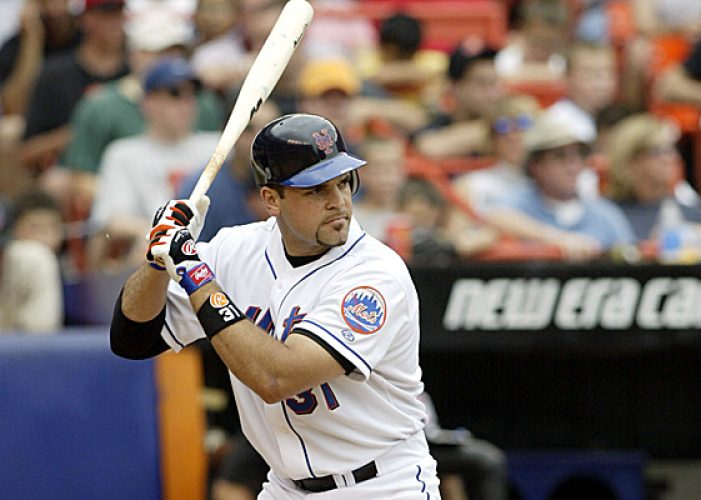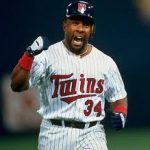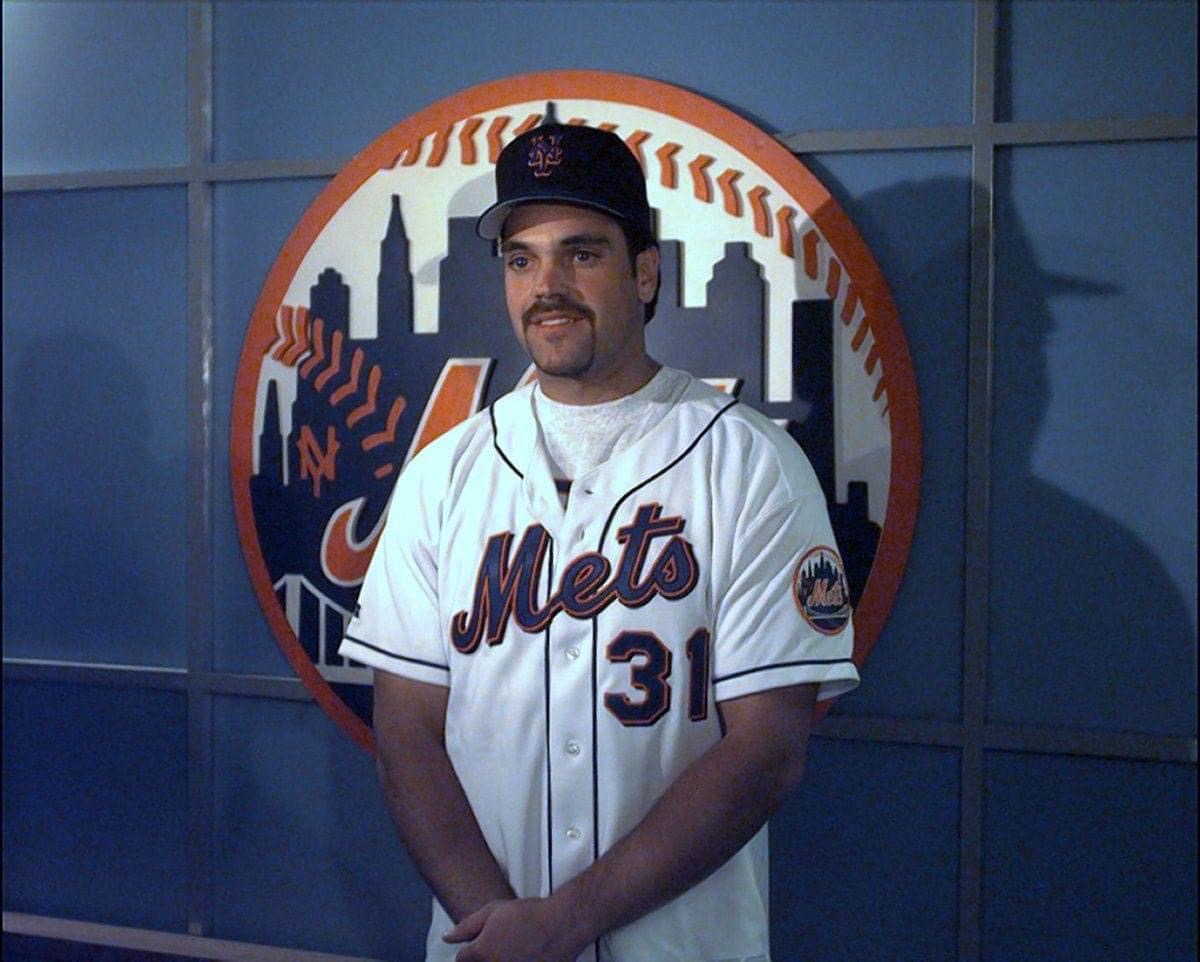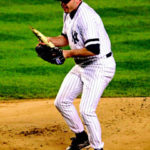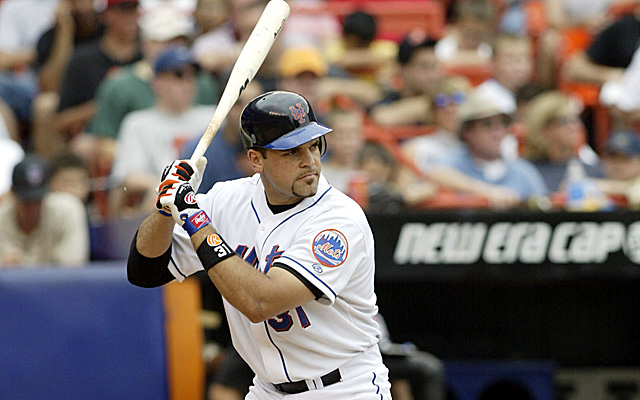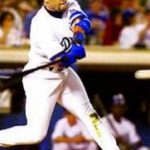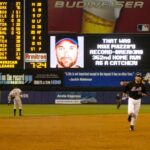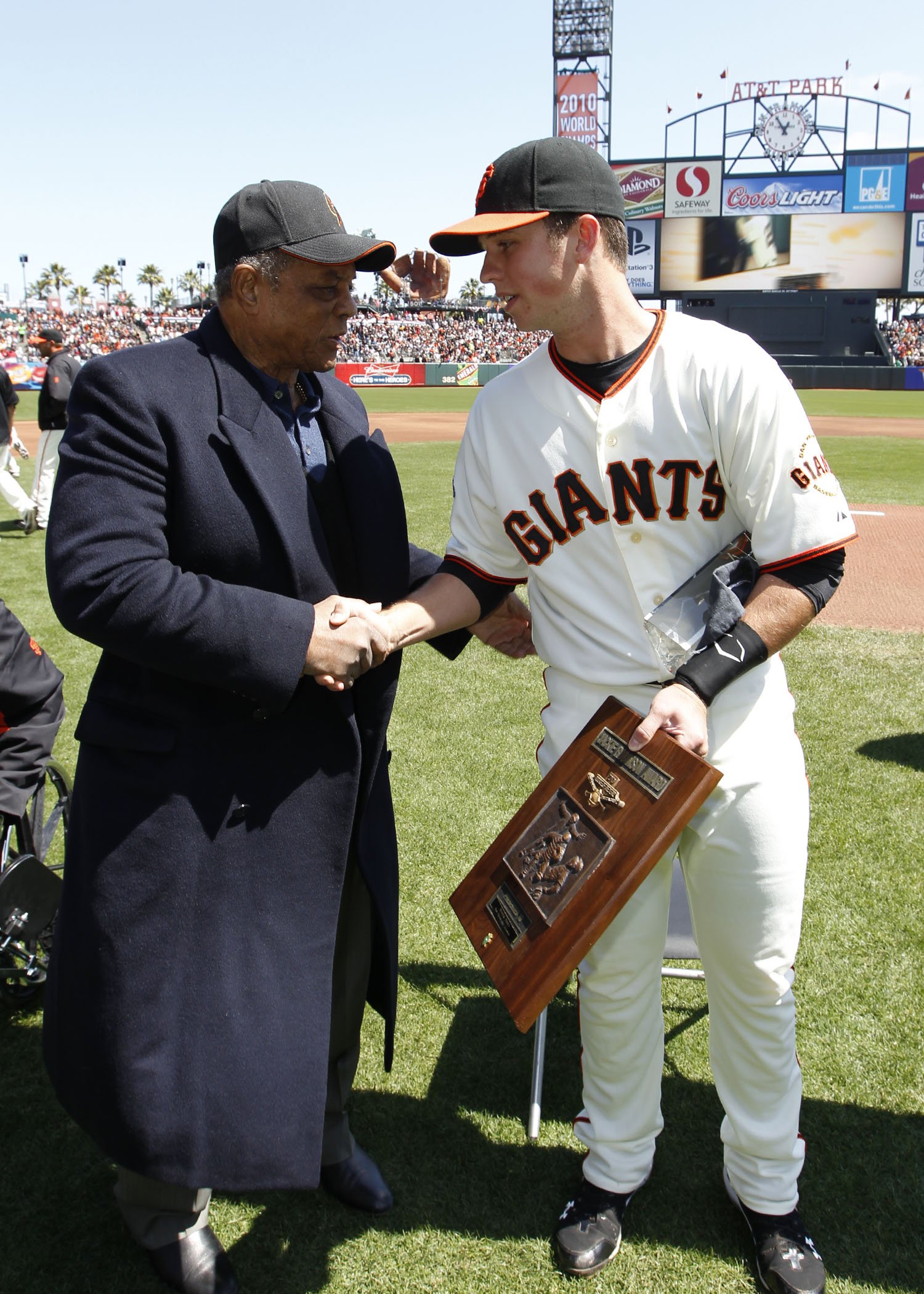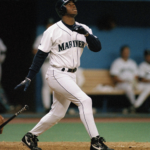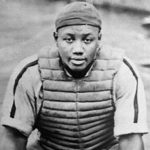Mike Piazza
Positions: Catcher and First Baseman
Bats: Right • Throws: Right
6-3, 200lb (190cm, 90kg)
Born: September 4, 1968 (Age: 52-348d) in Norristown, PA
Draft: Drafted by the Los Angeles Dodgers in the 62nd round of the 1988 MLB June Amateur Draft from Miami-Dade College (Miami, FL).
High School: Phoenixville HS (Phoenixville, PA)
Schools: University of Miami (Coral Gables, FL), Miami-Dade College (Miami, FL)
Debut: September 1, 1992 (Age 23-363d, 16,218th in major league history)
vs. CHC 3 AB, 3 H, 0 HR, 0 RBI, 0 SB
Last Game: September 30, 2007 (Age 39-026d)
vs. LAA 4 AB, 1 H, 0 HR, 0 RBI, 0 SB
Hall of Fame: Inducted as Player in 2016. (Voted by BBWAA on 365/440 ballots)
View Mike Piazza’s Page at the Baseball Hall of Fame (plaque, photos, videos).
Agents: Dan Lozano, Dennis Gilbert
Full Name: Michael Joseph Piazza
Pronunciation: \Pee-AH-za\
Twitter: @mikepiazza31
View Player Info from the B-R Bullpen
View Player Bio from the SABR BioProject
Notable Events and Chronology for Mike Piazza Career
Biography
Mike Piazza began his professional career as one of baseball’s biggest long-shots, but ended it as an almost sure shot for the Hall of Fame. Almost 1,400 players were selected before the Los Angeles Dodgers chose Piazza in the 62nd and final round of the 1988 amateur draft, but none of those players had the meteoric impact that Piazza had in his record-breaking Rookie of the Year campaign in 1993. In the decade that followed, Piazza reigned as one of baseball’s most feared sluggers, and as one of its most reliable clutch hitters. After posting five All-Star and MVP-caliber seasons in Los Angeles, Piazza was traded early during the 1998 campaign to the Florida Marlins, who in short order traded him to the New York Mets. Already a bona fide superstar, Piazza achieved even greater fame during his sensational and sometimes stormy tenure with the Mets. Almost overnight, he helped transform the floundering franchise from Big Apple also-rans to championship contenders. While his stay in Flushing was relatively short, and though he finished his career on the west coast, Piazza is perhaps the most revered and beloved position player in Mets history, as can be evidenced by the special role he played in the team’s Shea Stadium closing ceremonies in 2008.
Throughout his career, critics made much of Piazza’s defensive shortcomings behind the plate, but no one questioned his skills in the batter’s box. He is widely regarded as the best-hitting backstop in major league history; his 396 home runs as a catcher are a record for that position. Unlike most free-swinging sluggers, Piazza was also a remarkably disciplined and discerning hitter. Over the course of a 15-year career during which he swatted 427 home runs and compiled a .308 average, Piazza never struck out more than 100 times in a single season. In major league history, only seven other players have finished their careers with more than 400 home runs and a .300+ average while never reaching the century mark in strikeouts; with the exception of Chipper Jones, who is still active, each of those players is enshrined in Cooperstown.
If he is to join that illustrious group of players when he becomes eligible for Hall of Fame induction in 2012, Piazza has expressed his wish to be bronzed as a Met. While he might ultimately want to be remembered as such, by birth and circumstance it would seem that Piazza was destined to at least start his career in Dodger blue. His father was a close, lifelong friend of legendary Dodger manager Tommy Lasorda; both were natives of Norrisville, Pennsylvania, where Mike himself was born in 1968. When the Dodgers finally selected Piazza from Miami-Dade Community College in 1988, they did so, at least in part, as a courtesy to Lasorda, who urged the club to take a chance on the young ballplayer. After spending a few years honing his skills as a catcher in rookie ball, Piazza shot through the Dodgers’ farm system in 1992, when he batted .350 with 23 home runs during stints at both the AA and AAA levels. By September of that year, he was starting behind the plate for the big club. He did little to distinguish himself in the 21 games he played that month, but, by the same time the following year, he had established himself as one of the most celebrated hitters in baseball.
Mike Piazza’s rookie campaign in 1993 ranks among the finest freshman seasons in baseball history. His 35 home runs and 118 runs batted in were both records for a rookie receiver. The young phenom, who only a year before had toiled in baseball obscurity, was named to the NL All-Star team, an uncommon honor for a rookie, and he capped off his magical year by winning a Silver Slugger award and placing in the top ten in the NL MVP voting. In the years that followed, Piazza proved that he was not a one-year wonder. In each of his five seasons at Chavez Ravine, Piazza batted over .300, and he failed to surpass 30 home runs and 100 RBIs only in the strike-shortened 1994 season. Such consistent production would be remarkable for a player at any position, but it was especially rare among catchers. As a result, Piazza became a fixture behind the plate for the NL All-Star team during the 1990s, and he had a virtual lock on the Silver Slugger award for that position. After finishing second in the NL batting race in 1995, he placed second in the league MVP voting in each of the next two seasons, compiling his best numbers as a Dodger in 1997, when he became only the third catcher in baseball history to club 40 home runs in a season (.362, 40 HR, 124 RBIs).
Piazza’s contract with the Dodgers was scheduled to expire at the end of the 1998 season, and the young star seemed to be in line for a multi-year, multi-million-dollar payday. The Dodgers, wary of taking on such a hefty contract, abruptly traded their MVP to the Florida Marlins, who just as quickly traded him to the New York Mets. Though he struggled in his first few weeks in New York, Piazza ended up making a huge impact on his new club. The Mets had languished as a second-division team for much of the previous decade. But Piazza’s arrival gave the team a renewed credibility, a legitimate threat in the middle of the lineup, and a strong leader in the clubhouse. He batted .348 in his first year with his new club, bringing the Mets to within a game of the postseason.
In the off-season that followed, New York rewarded Piazza with a record seven-year, $91 million contract. The catcher paid immediate dividends on that investment by crushing 40 home runs, knocking in 124 runs, and leading the Mets to the playoffs for the first time in 11 years. New York fell to the rival Atlanta Braves in the NLCS, but the team returned to the postseason the following year behind another MVP-caliber season from Piazza. That 2000 campaign marked the first time in franchise history the Mets advanced to the playoffs in consecutive years. The team subsequently improved upon its previous year’s performance by reaching the World Series, where it faced the cross-town rival New York Yankees. The Mets ultimately lost to the Yankees in five games, but each contest was extremely competitive, with neither team posting a winning margin of more than two runs. Piazza, who homered twice in the Series, heightened the drama in the ninth inning of Game Five, but his booming drive was reeled in by centerfielder Bernie Williams for the final out of the Fall Classic.
As competitive as the 2000 World Series was, it is perhaps best remembered for a bizarre incident that occurred in Game Two. Piazza stepped into the batter’s box at Yankee Stadium against former Cy Young Award winner Roger Clemens. The two men previously faced one another during the regular season in an interleague game played between the two teams. Clemens hit Piazza in the head with a searing fastball during that contest, knocking him unconscious and forcing him to sit out the All-Star Game. Since Piazza had enjoyed great success against Clemens up to that point, many in the New York media speculated whether the pitch was intentional. With tensions already running high as a result, Piazza dug in and fouled off a Clemens fastball, breaking his bat in the process. The bat head sputtered out into the field of play, where it was “fielded” by Clemens, who angrily flung its shattered remains in the direction of an unsuspecting Piazza. Stunned, Piazza seemed poised to confront Clemens, as both benches emptied. However, order was soon restored before the situation was permitted to escalate. Both players later downplayed any perceived enmity between them, but subsequent meetings between their respective teams continued to be surrounded by an air of uneasiness for quite some time. Ironically, Piazza later became Clemens’ battery mate in the 2004 All-Star Game in Houston; Clemens started the game and gave up six runs in the first inning.
Following the thrill of that 2000 World Series, the Mets struggled to stay above the .500 mark the next year. Yet, they found themselves playing for something more profound than a mere postseason berth in the season’s final month. Ten days after the horrific terrorist attacks of September 11th; the Mets played host to the first public sporting event in New York City. On that strange and solemn occasion, Shea Stadium was filled with shaken and uncertain New Yorkers badly in need of something to lift their spirits. After a stirring and emotional opening ceremony honoring the city’s first responders, the Mets battled the archrival Atlanta Braves in a taut contest. With the Mets trailing 2-1 and a runner on base in the bottom of the eighth inning, Piazza stepped to the plate and launched arguably the most meaningful home run of his career into the New York night, securing a 3-2 Mets victory. The stadium shook as Piazza rounded the bases and the crowd roared in a cathartic frenzy. Adopting the caps of New York’s various emergency services for the remainder of the season, the Mets made a valiant run for the NL Wild Card, but fell short in the final weeks of the season.
In time, age, injuries, and the daily rigors of catching began to take their toll on Piazza. Though he hit 33 home runs in 2002, his average dipped below the .300 mark for the first time in his career, and he sat out most of the following season with a groin injury. After Piazza passed Carlton Fisk to become the all-time home run leader among catchers early in the 2004 season, the Mets installed him at first base for a number of games in an attempt to ease the strain on his body and keep his bat in the lineup. However, with the New York media closely scrutinizing Piazza’s every move at his new position, the experiment proved to be failure, prompting the team to return him to his regular duties behind the plate. With Piazza’s contract set to expire after the 2005 season, and with an infusion of talented young players such as David Wright, Jose Reyes, and Carlos Beltran, the Mets made it clear that the organization felt a need to head in another direction, failing to offer their catcher a new deal. Nevertheless, the Mets paid Piazza a special tribute in the final home game of the season. After manager Willie Randolph removed him in the eighth inning, play was suspended while the Mets aired a grateful video retrospective of Piazza’s career as a Met. After receiving an eight-minute standing ovation, a visibly moved Piazza emerged from the dugout to acknowledge the crowd and say goodbye. He played two more seasons, one with the San Diego Padres and one with the Oakland Athletics, before retiring at the start of the 2008 season.
Later that year, Piazza was invited back to the ballpark he called home for eight years to take part in Shea Stadium’s closing ceremonies. A number of former Mets stars and baseball luminaries took part in the festivities, but a special honor was reserved for Piazza, who received the final pitch ever thrown in the stadium from Hall of Famer Tom Seaver. By pairing him with Seaver, widely regarded as the greatest Mets player of all time, the organization seemed to tacitly acknowledge Piazza’s importance to the team’s history, and the special place he still holds in the hearts of its fans.@ET-DC@eyJkeW5hbWljIjp0cnVlLCJjb250ZW50IjoicG9zdF90YWdzIiwic2V0dGluZ3MiOnsiYmVmb3JlIjoiTGVhcm4gTW9yZSBhYm91dCB0aGUgdGVhbXMsIHBsYXllcnMsIGJhbGwgcGFya3MgYW5kIGV2ZW50cyB0aGF0IGhhcHBlbmVkIG9uIHRoaXMgZGF0ZSBpbiBoaXN0b3J5IC0gLSAtIC0gLSAtIC0gIiwiYWZ0ZXIiOiIiLCJsaW5rX3RvX3Rlcm1fcGFnZSI6Im9uIiwic2VwYXJhdG9yIjoiIHwgIiwiY2F0ZWdvcnlfdHlwZSI6InBvc3RfdGFnIn19@

